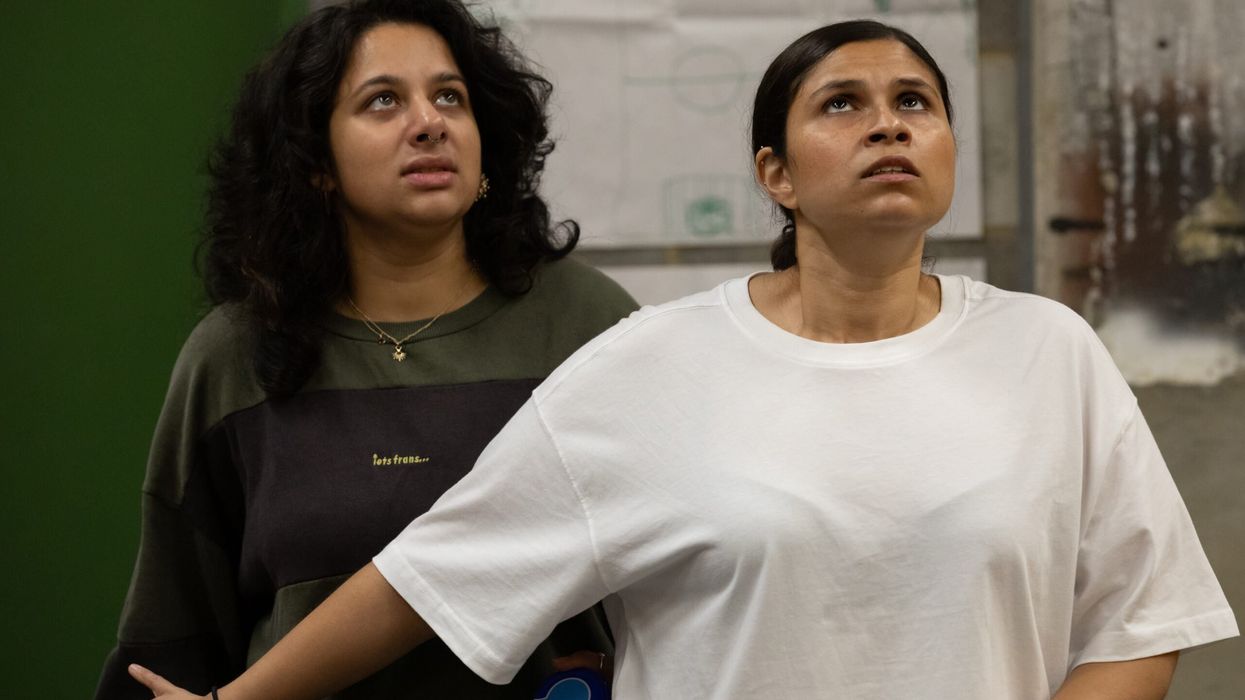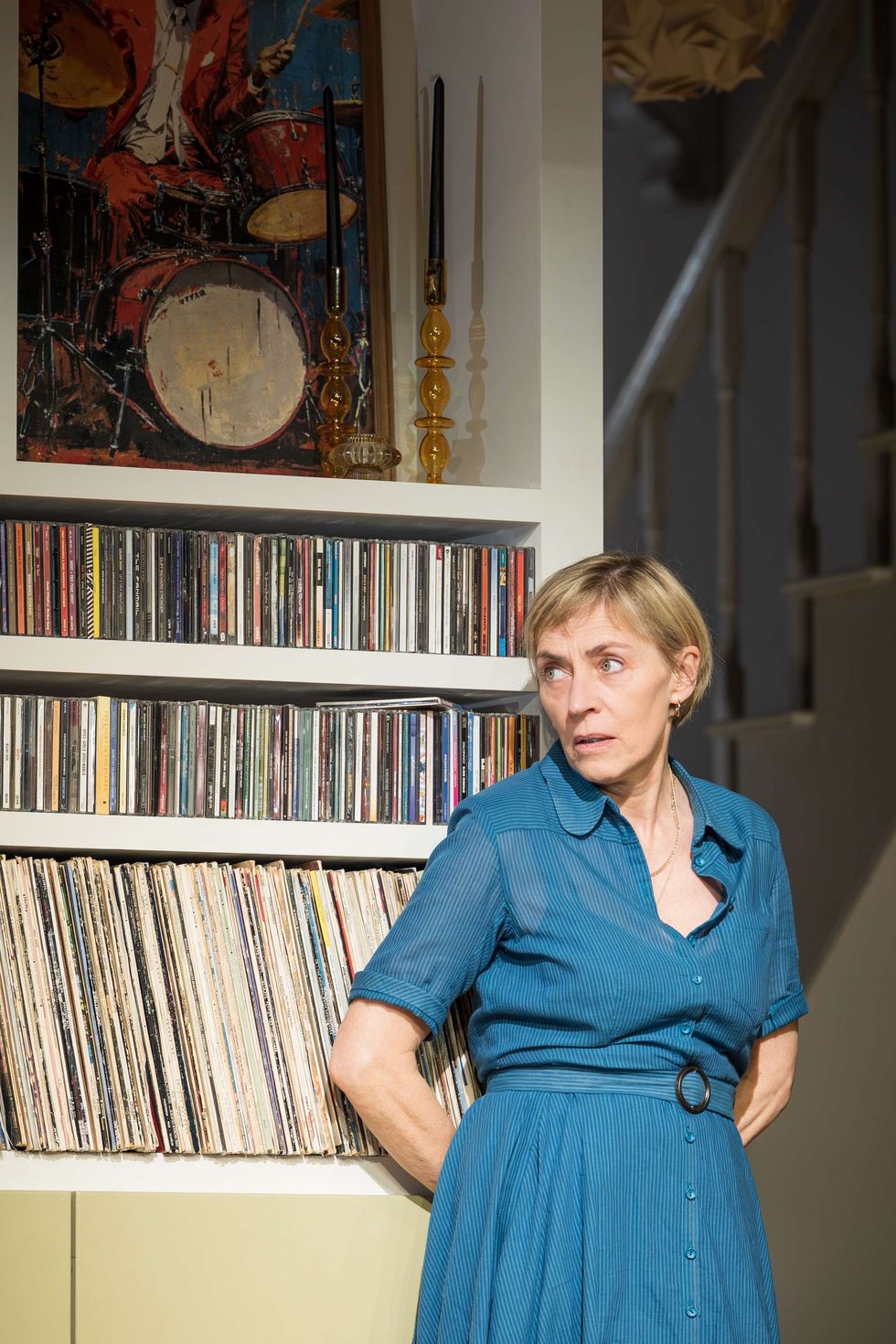ACCLAIMED playwright Sonali Bhattacharyya has been working on the story for King Troll (The Fawn), for seven years and in that time, her exploration of systemic racism has developed to include witches and mythical creatures.
“The show is really about the monster within,” Bhattacharyya told Eastern Eye.
“It’s how the broader regime and systemic racism impacts our souls as human beings, but particularly as racialised people, and how that sort of system creates a sense of competition between us – it fosters a sense of inhumanity and self-loathing. That’s why I really leaned into horror with this play,” she added.
King Troll (The Fawn) is a dark, dystopian thriller about two south Asian sisters, desperate to escape the border regime without losing their humanity.
It dwells on the full extent of migrant experiences in all its complexity – one that she said is rarely heard or understood.
Sonali Bhattacharyya“I am really keen for this play to show that these sort of names – refugee, migrant, asylum seeker – are inventions by a racist system to divide us,” she said.
“Some people move because they want to and others, because they have to. That’s completely natural and a human response to the world – people have always moved, but these sort of labels to divide and categorise people into ‘who deserve to move and who doesn’t deserve to move’ are harmful to all of us and erode all of our humanity.”
Sisters Riya (Safiyya Ingar) and Nikita (Zainab Hasan) navigate the increasingly authoritarian island where they live in different ways. Insecure and stateless, both are desperate for somewhere to call home.
Riya, who doesn’t have a work visa like her sister, is offered the chance to create an advocate in the form of a homunculus, or fawn, and sees a chance to elevate herself above the cruelty meted out to others.
In the play, the new regulations allow someone to sponsor a person’s leave to remain, regardless of their employment status. “The story starts when new rules are introduced, and Riya’s status becomes precarious. She’s applying for leave to remain, but they extend the time period needed to demonstrate residency in the country, and the sisters just can’t find the paperwork they need, although they have been in the country the required amount of time,” said Bhattacharyya.
Nikita, meanwhile, tries to keep her saviour complex in check as she negotiates the challenges and hypocrisy of the third sector, where she supports migrant teenagers. Her deep connection with one client forces her to confront the limitations of her work.
“Suddenly, there is an hierarchy within the sisters’ dynamic. Riya is less secure than Nikita, because she hasn’t been able to find a sponsor,” said Bhattacharyya.
“It’s very loosely based on the Windrush scandal, but, obviously, these things are happening all the time with new legislation being brought in.”
Bhattacharyya rev ealed her own parents lived through the upheaval that migrating from one country to another brings. “My parents moved to the UK in the late 1960s; but, before that, my dad was a child refugee and my mum was an economic migrant as a child,” she said.
“My father’s family had to flee Burma, when the Japanese invaded in World War Two. My mother’s family left Chittagong, which was then in East Pakistan, because it became untenable for them to remain there as a family.”
“The overarching theme of the play is this very real and very understandable human desire to have some sense of home, because home means safety and that’s something that is universal.”
The continued change in immigration laws in the UK over the past few years led to the story of King Troll (The Fawn) evolving and having different incarnations.
“I realised that I couldn’t keep up with the way things were moving in this country - in terms of the border regime and immigration and legislation,” she said.
“Things were happening at such a speed and with such catastrophic impact, I actually couldn’t anticipate what was going to happen and try and reflect that in the play. That’s when I pulled back from trying to keep up with current events and leaned into the horror of the psychological impact on individuals.
Ayesha Dharker, in rehearsals“That’s when it became a full-blown horror, and where the fawn was born. And that’s where the idea of this really being about the impact on these two sisters and their lives came about.”
Desperate to find a sponsor, Riya enlists the help of a witch called Shashi (Ayesha Dharker) who helps them creates a homunculus (The Fawn) to be her advocate.
The creature comes from the concept of 16th century alchemy and the creation of a miniature, fully formed human by inserting human sperm into a horse, cow or chicken’s womb.
“Shashi offers them the world and it’s really within those horror tropes that Riya finds herself succumbing to the temptation of a quick fix and an easy way towards security,” said Bhattacharyya.
“She slowly begins to find power through that as well, which is where the slippery slope really begins and she finds herself climbing the greasy pole at the expense of others.”
Bhattacharyya revealed the idea for the play was born out of her interest to write about the rise of the far right and how this was impacting black and brown people and also her interest in the “phenomenon of the brown Tory (Conservative)”.
“It’s the policies of black and brown politicians whose parents were migrants. It’s not simple because, of course, there’s all kinds class dimension and socio-political reasons why the likes of Priti Patels of this world have the politics that they do,” said Bhattacharyya.
“It’s very hard to avoid when you grow up as a racialised person in a racist country and you see that temptation to, instead of reaching out to one another and extending solidarity and connection and working together to try and resist this system that dehumanises us – the fawn is instead that little voice that says, ‘don’t bother – you can shove people aside and you can stab people in the back, and you can climb over people’s necks, and you can get ahead that way.
Milli Bhatia“King Troll is about the troll that lives within all of us – whispering ‘me, not us’, and definitely, ‘me’ first. In narrative terms, it’s like true death is when the tragic character renounces their values and gives up on human connection.”
The play is Bhattacharyya and Milli Bhatia’s third collaboration as writer and director, following Chasing Hares and Liberation Squares. The duo first worked together on a Kali workshop and reading of King Troll (The Fawn) in 2021.
They both will also be working again with two of the stars of Chasing Hares in Dharker and Hasan, whilst Ingar was in Bhattacharyya’s Two Billion Beats.
“I’m really excited to be working with Milli again with an absolutely exceptional cast,” said Bhattacharyya, who hasn’t been able to attend rehearsals as she’s recovering after a fall while indoor climbing with her children.
“I am really excited about the show. Although I’ve been very sad not to be able to be in rehearsals, I have been Zoom-ing in. The way that the show is developing, I can see the entire team is having a great time working together.”






 A scene from the playMarc Brenner
A scene from the playMarc Brenner Saskia ReevesMarc Brenner
Saskia ReevesMarc Brenner Clive Owen Marc Brenner
Clive Owen Marc Brenner






